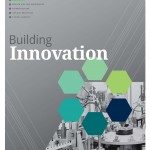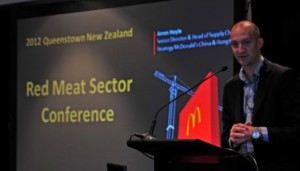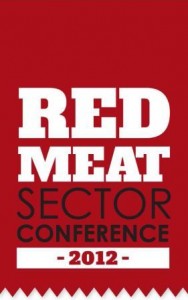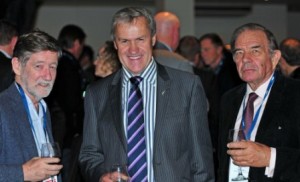 The Government has today unveiled its first Business Growth Agenda Progress report on actions to boost New Zealand exports. It is a timely appearance as the Primary Sector Boot Camp reaches its halfway point in the US.
The Government has today unveiled its first Business Growth Agenda Progress report on actions to boost New Zealand exports. It is a timely appearance as the Primary Sector Boot Camp reaches its halfway point in the US.
Launched by Finance Minister Bill English and Economic Development Minister Steven Joyce, the Building Export Markets report from the Ministry of Business, Innovation and Employment (MBIE) confirms the Government’s target to increase the contribution of exports to the economy from 30 percent to 40 percent of GDP by 2025.
English says this a challenging target and achieving it will require a concerted effort by New Zealand over many years. It will also require the continued development of new and expanding export markets.
“It is only through exporting that New Zealand, with a small domestic market, can deliver the growth and productivity required to enhance the wealth of our country and create more and higher paying jobs,” he says.
“Committing to this ambitious goal means the Government will stay focused on supporting firms to grow their exports.”
Steven Joyce says the report highlights the significant shift in economic power from the West to the East that is expected to happen over the next 20 years.
Building Export Markets is the first of six progress reports on the government’s Business Growth Agenda. Others will address innovation,skills, capital markets, infrastructure and resources. The reports lay out the work programme government agencies are implementing. Each has an informal portfolio group of ministers specifically grouped around the work streams, to drive the Business Growth Agenda forward and focus on what matters to business and companies.
Government intends to see three additional cross-cutting themes to be reflected across the Business Growth Agenda workstreams. These are: Maori Economic Development, Greening Growth; and Regulation. Better telling the ‘New Zealand Story’ is another Government priority and work is already underway with key stakeholders on “developing a compelling and consistent narrative about our country’s special qualities that work for a range of exporters and sectors,” according to the Ministers.
Actions contained in the Building Exports report include improving access to international markets, making it easier to trade from new Zealand, helping businesses internationalise, increasing value from tourism and high-tech manufacturing, growing international education and strengthening high-value manufacturing (including food and beverage manufacturing) and services exports.
“This first report is important, as it lays out the challenge for achieving growth – which is about being much more closely linked into the rest of the world and taking advantage of our opportunities,” says Joyce.
“While the world is going through tough times, the growth in Asian incomes will occur over the next 20 year. So there will be job growth, New Zealand’s challenge is to ensure it occurs in New Zealand, not in Australia, or somewhere else.”
The report shows that beef, lamb and wool accounted for 13 percent of New Zealand’s total $47.7 billion goods exports in 2011.
The Building Export Markets report is available here.
Carter in US for boot camp
Because of its size and importance, New Zealand’s primary sector, which currently accounts for 55 percent of exports is “critical” to achieving the government’s desired growth, the report says, so the outcome of this week’s Primary Sector Boot Camp at Stanford University will also be critical.
Minister of Primary Industries, David Carter, is part of the nine-strong Export Markets ministerial group, which also includes Prime Minister John Key, Steven Joyce, Murray McCully and Tim Groser. Carter is travelling in the United States this week to attend the Boot Camp and also to talk with US agriculture sector political leaders and officials.
“This is an excellent opportunity for the leaders of some of our most forward-thinking primary sector companies to collaborate on formulating a plan to leverage New Zealand’s competitive advantage globally,” Carter said before he left.
“It’s not often that we can get a powerful group like this representing over 80 percent of New Zealand primary sector exports around the table, and I am confident of a positive outcome.”
About 20 leaders from New Zealand’s dairy, meat, seafood, wine and horticulture industries are among those attending the week-long camp alongside top government representatives from MPI and NZ Trade and Enterprise. The group will be hearing from first class speakers to inspire and motivate their thinking. The event has been supported with a $100,000 grant from AGMARDT.
Among the range of agricultural organisations the Minister is meeting with separately to discuss common New Zealand–US primary industry interests are the Tri-Lamb Group and US Cattlemen’s Association.
“These meetings further strengthen the New Zealand-US bilateral relationship and give our two countries the opportunity to canvass a range of issues in the primary industries policy area. It is an opportunity to highlight the excellent collaborative work we already have with the US though the Global Research Alliance on agricultural greenhouse gases,” says the Minister.
“I particularly look forward to discussions on the mutual benefits that will be realised through the Trans-Pacific Partnership free trade agreement currently under negotiation.
“The TPP is important to New Zealand’s trade future and this visit will provide the opportunity to take political level readings on its progress.”
 London Paralympic Games champion swimmer Sophie Pascoe is the newest Beef+Lamb NZ Inc Iron Maiden, becoming the + between Sarah Walker’s ‘Beef’ and Lisa Carrington’s ‘Lamb’.
London Paralympic Games champion swimmer Sophie Pascoe is the newest Beef+Lamb NZ Inc Iron Maiden, becoming the + between Sarah Walker’s ‘Beef’ and Lisa Carrington’s ‘Lamb’.















